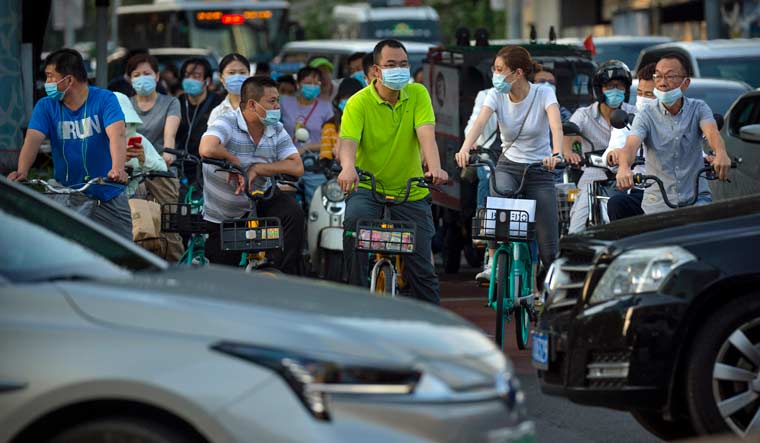In an address delivered on China’s state radio, premier Li Keqiang on Sunday said the country’s economy could grow this year, with up to 9 million jobs to be created this year.
The 9-million job figure is the same that was promised in the Government Work Report delivered at the start of the annual session of the National People’s Congress in May. China had in July reported that the national GDP was growing at 3.2 per cent in the second quarter of the current fiscal year following a 6.8 per cent slump in the first quarter.
The claim comes as the global economy faces its deepest recession since World War 2, with the World Bank predicting a 5.2 per cent contraction worldwide as a result of the COVID-19 pandemic.
In May, Keqiang said that for the first time in its history, China would not set a GDP growth target for 2020.
Though the pandemic initially originated in China, with cases centred in the Hubei Province, over time China lost its position as the country with the most number of cases. As of August 23, it was ranked 35th in the world in terms of the total number of COVID-19 cases, with just under 85,000.
However, there are doubts over the veracity of China’s reported coronavirus numbers, as well as long-running doubts over its GDP figures. US Secretary of State Mike Pompeo had in May accused China of obfuscating its COVID data, while its GDP figures have long been accused of being exaggerated.
In terms of restarting its economy, China had a head-start over the rest of the world, as its COVID-19 induced lockdowns ended in April even as the virus raged across Europe and the Americas, forcing entire economies to grind to a halt.
By the end of March, China claimed that over 98 per cent of its major industrial firms had resumed work. Consumer spending made a gradual recovery, prompting firms like Alibaba to post strong results—showing 34 per cent year-on-year growth in the second quarter ending June 30, driven by shoppers going online in increasing numbers. From Apple to Walmart, multinational companies saw sales surge in China: Apple saw iPhone sales go up 225 per cent in the April to June quarter, while Walmart saw e-commerce sales up by 104 per cent, according to CNBC.
In July, China’s exports were up 7.2 per cent from the previous year, driven by a surge in exports of medical supplies.
However, China’s revival faced challenges beyond restoring its domestic consumption and output: The US has grown increasingly belligerent to Chinese companies, mounting an ever-growing campaign against the role of Huawei in 5G trials across the world. On Sunday, US President Donald Trump told Fox News that the US didn’t “have to” do business with China, hinting at a decoupling of the US and Chinese economies.
In addition, the border clashes with India sparked a strong anti-China sentiment in Asia’s third-largest economy, prompting a government-driven move against Chinese imports that’s resulted in China’s biggest app-makers having their products banned in India.
The country’s latest crisis is natural: The worst floods in over 20 years have displaced nearly nine million people, costing billions of dollars of losses. So severe were the floods that both premier Keqiang and President Xi Jinping left Beijing to visit the flood-affected provinces. Keqiang has promised to reduce taxes and stimulate the economy to help it recover from the disaster.


